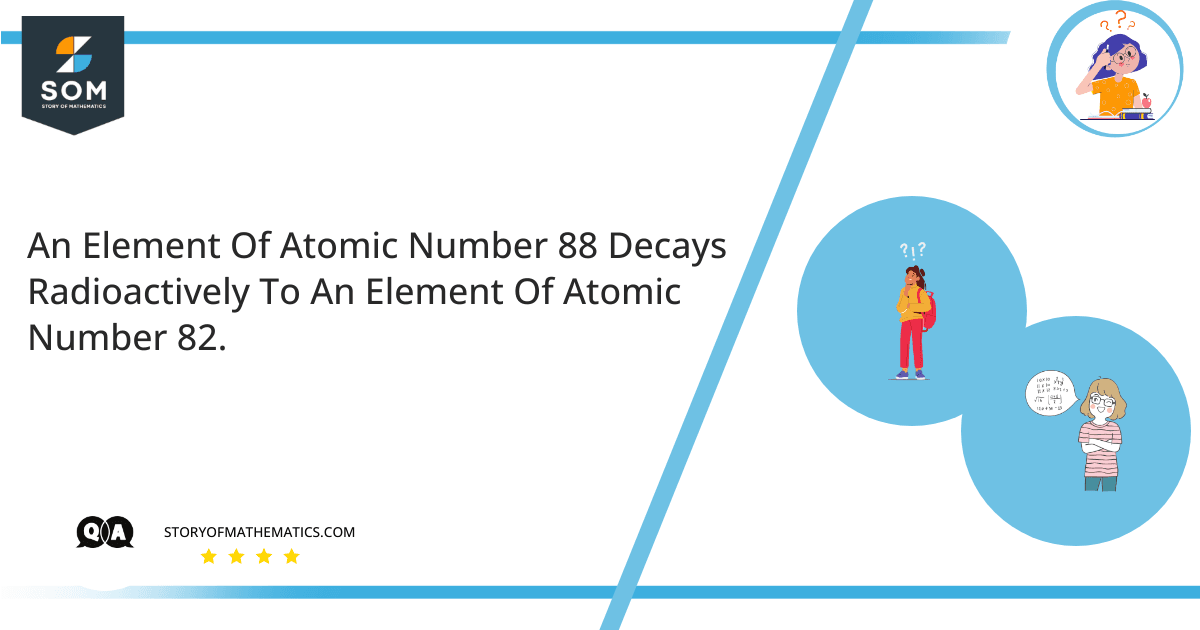
Given the following four types of possible emissions, which one achieves the given result?
- A pair of alpha and beta particles
- A single alpha particle
- A group of three alpha particles
- A group of six beta particles
The aim of this question is to learn the fundamental types of nuclear decay.
There are basically three types of nuclear decay named alpha, beta and gamma decays.
In alpha decay, one alpha particle (nucleus of helium with two protons and two neutrons) is emitted. As a result of such reaction, the atomic number is reduced by 2 and mass number is reduced by 4.
In beta decay, one beta particle (an electron) is emitted. A pair of proton and beta particle is generated as a result of breakdown of one neutrino particle in the nucleus. The proton remains in the nucleus where as beta particle is emitted. As a result of such reaction, the atomic number is increased by 1 while mass number remains same.
In gamma decay, only a burst of energy (gamma ray) is emitted from an excited nucleus. As a result of such reaction, both atomic number and mass number remain same.
Expert Answer
Given:
Atomic number before decay = 88
Atomic number after decay = 82
Here:
Atomic number of emitted particle = Atomic number before decay – Atomic number after decay
Atomic number of emitted particle = 88 – 82 = 6
Since:
Atomic number reduction due to beta particle = 1
Atomic number reduction due to alpha particle = 2
So it is possible that either three alpha particles or six beta particles were emitted. We could have made a better guess if the mass number information was also given.
Numerical Result
It is possible that either three alpha particles or six beta particles were emitted.
Example
In a certain nuclear emission reaction, an element with atomic number 82 and mass number 214 is consumed and an element with atomic number 82 and mass number 210 is produced. Given the following four types of possible emissions, which one achieves the given result?
- A pair of beta particles and one alpha particle
- A single alpha particle
- A pair of alpha particles
- A group of four beta particles
Given:
Atomic number before decay = 82 = Atomic number after decay
Mass number before decay = 214
Mass number after decay = 210
Here:
Mass number of emitted particle = Mass number before decay – Mass number after decay
Atomic number of emitted particle = 214 – 210 = 4
Since:
Mass number reduction due to alpha particle = 4
So, it is possible that one alpha particle may have been emitted. However, alpha particle emission also reduces atomic number by 2, but it’s given that the atomic number remains same. We know that a proton is generated whenever there is a beta decay and a beta particle is emitted. So we can assume that two beta particles must also be emitted to make sure that the atomic number remains same.
In conclusion, we can say that in the given nuclear reaction a pair of beta particles and one alpha particle were emitted.
